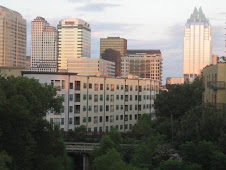Like the stripes on a zebra, no two apartment leases are identical. Leases run the gamut, from one page to several pages. And they often include a host of stipulations on the obligations of the landlord and the tenant.
Once signed, this document becomes a contract or agreement between the tenant and the landlord. Though we often click "I agree" to Terms of Service on Web sites, it's not a good idea to sign a lease without reading the fine print. Below is a list of typical parts of the apartment lease.
The Essentials:
--No lease is complete with these essential pieces of information. When you get a copy of the lease, make sure the following is stated in the lease.
--Names of all prospective tenants. The lease binds only those whose names are listed. You don't want to be stuck taking responsibility for everyone, in case something should happen. So check that all names, including those of your roommates, are listed.
--Address of the apartment. This means the address and apartment number.
--Amount of rent. The lease should indicate how often this amount is paid (weekly, monthly, etc.).
--Security deposit. The amount of the security deposit should be stated.
Start and end date. This represents the duration of the lease, which means the agreement is only active for this period.
--For leases — the length of time that the lease will be active, specified as the start and end date. This means you're obliged to pay rent and the landlord cannot rent this unit out to another during this period.
--For month-to-month rental agreements — the agreement should stipulate that the period is month-to-month and indicate how much notice must be given before moving out. Should the landlord decide to rent to someone else, he or she must also give this same notice to you.
Both the tenant and the landlord must sign the lease. The lease is not valid if only one party signs.
--Pet policy — specifies whether pets are allowed and what kind.
--Consequences of late rent payment. This could be anything, though usually it is a fine. Some apartment leases specify how many times you can be late before there are serious consequences. When such penalities are stated, make sure to take note of the due date for rent and whether there is a grace period.
--Services paid for by the landlord. This could be heat, hot and cold water, electricity, or all of the above. Additionally, should you vacate the apartment early, you need to know if you're required to maintain the electricity account (ie keep the lights on) inside the apartment even though you no longer reside.
--Policy on altering the apartment, such as painting, wallpapering, adding walls, railing, mounting satellite dishes, etc. Most landlords allow cosmetic changes, such as painting, but forbid major reconstructions.Have a plan in place for repainting your apartment when you leave.
--Policy on whether subletting is permitted or requires approval by the landlord. Some landlords require permission to sublet or approval of the person you intend to sublet to.
Policy on repairs — what to do if something breaks, who's responsible, and any penalties.
Policy on renters insurance — some landlords require you to buy renters insurance.
--Landlord's Right of Entry — discusses whether a landlord needs permission to Many management companies use a standard lease for most of their units, which they modify by tacking on "riders." These can be amendments to a clause in the main document, new clauses, or both.As you can see, an apartment lease specifies what you and the landlord may or may not be allowed to do. This document is meant to protect the both you. Therefore, before you sign the lease, please read all the fine print! It is your right and in your best interest to negotiate any of the terms with which you disagree. Remember to put new agreements in writing and on a piece of paper that is signed by both you and the landlord.
Tuesday, September 25, 2007
Wednesday, September 5, 2007
Apartment occupancy levels at 8 year highs!
What does this mean for you?
Fundamentally, it means that the price you pay for a new rental, or the price you pay to renew an existing lease, will most likely be higher than anything you've seen in 7 years. There will be fewer incentives/concessions given to renew this year as well.
If you're after a short term lease, you'll really feel the impact of the limited supply in terms of elevated prices. From a landlord's point of view, if there are more renters than there are available units, why accept a shorter term lease when there are others who will gladly take the longer lease to lock down the price?
Why are we experiencing this housing crunch? A couple of factors come in to play. Our new construction market has been white hot for some time now, and downtown condos are en vogue more now than ever before. There are just under 20 projects within 2 miles of downtown currently underway, and half as many more coming down the pipe.
Wait a minute, if they're building more, what explains our current market, you ask? It might take 3 or 4 years from conception to fruition on a high-rise condo, but a small, 30 unit community can be vacated, rehabbed & sold in just under a year. This is a huge trend for the older neighborhoods in Clarksville, Tarrytown, Barton Hills & South Central. That's a large contributor to the supply problem; The smaller investor groups who're taking an older, central Austin location, clearing out the old tenants (who were paying far less than market value) and converting them to condos to be sold. These communities rarely saw any turn over (people moving in and out; to the contrary- very stagnant), and now their displaced tenants are back in the rental pool, adding to the demand. In the past, I would get 1 call in 100 from people who's former housing was being converted. Today, that number is 1 in 4 calls. Odds are, if it hasn't happened to you, it's happened to your friends.
Another reason that we're behind the curve on rental housing is due to the 2200 people a month who move here. We grew by over 25,000 people last year, and we're setting the same pace for this year! In order to sustain housing for this growth, we need to add approximately 7-9 new communities of 300-400 units a piece per year to keep up with the demand. We haven't added more than 5 on average for the past 2 years, so we're a little behind. We're slated to open 8 new communities in '08 to address these needs.
What does this mean for 2008? Prices might come down a skosh, but we won't see anything significant until 2009. Hang in there! In 2010 they'll be giving away Cadillacs again!
Barron
Broker/ REALTOR
http://www.greenlightlocating.com/
Fundamentally, it means that the price you pay for a new rental, or the price you pay to renew an existing lease, will most likely be higher than anything you've seen in 7 years. There will be fewer incentives/concessions given to renew this year as well.
If you're after a short term lease, you'll really feel the impact of the limited supply in terms of elevated prices. From a landlord's point of view, if there are more renters than there are available units, why accept a shorter term lease when there are others who will gladly take the longer lease to lock down the price?
Why are we experiencing this housing crunch? A couple of factors come in to play. Our new construction market has been white hot for some time now, and downtown condos are en vogue more now than ever before. There are just under 20 projects within 2 miles of downtown currently underway, and half as many more coming down the pipe.
Wait a minute, if they're building more, what explains our current market, you ask? It might take 3 or 4 years from conception to fruition on a high-rise condo, but a small, 30 unit community can be vacated, rehabbed & sold in just under a year. This is a huge trend for the older neighborhoods in Clarksville, Tarrytown, Barton Hills & South Central. That's a large contributor to the supply problem; The smaller investor groups who're taking an older, central Austin location, clearing out the old tenants (who were paying far less than market value) and converting them to condos to be sold. These communities rarely saw any turn over (people moving in and out; to the contrary- very stagnant), and now their displaced tenants are back in the rental pool, adding to the demand. In the past, I would get 1 call in 100 from people who's former housing was being converted. Today, that number is 1 in 4 calls. Odds are, if it hasn't happened to you, it's happened to your friends.
Another reason that we're behind the curve on rental housing is due to the 2200 people a month who move here. We grew by over 25,000 people last year, and we're setting the same pace for this year! In order to sustain housing for this growth, we need to add approximately 7-9 new communities of 300-400 units a piece per year to keep up with the demand. We haven't added more than 5 on average for the past 2 years, so we're a little behind. We're slated to open 8 new communities in '08 to address these needs.
What does this mean for 2008? Prices might come down a skosh, but we won't see anything significant until 2009. Hang in there! In 2010 they'll be giving away Cadillacs again!
Barron
Broker/ REALTOR
http://www.greenlightlocating.com/
Labels:
aparmtent,
Austin apartments,
Austin rentals,
occupancy
Subscribe to:
Comments (Atom)





